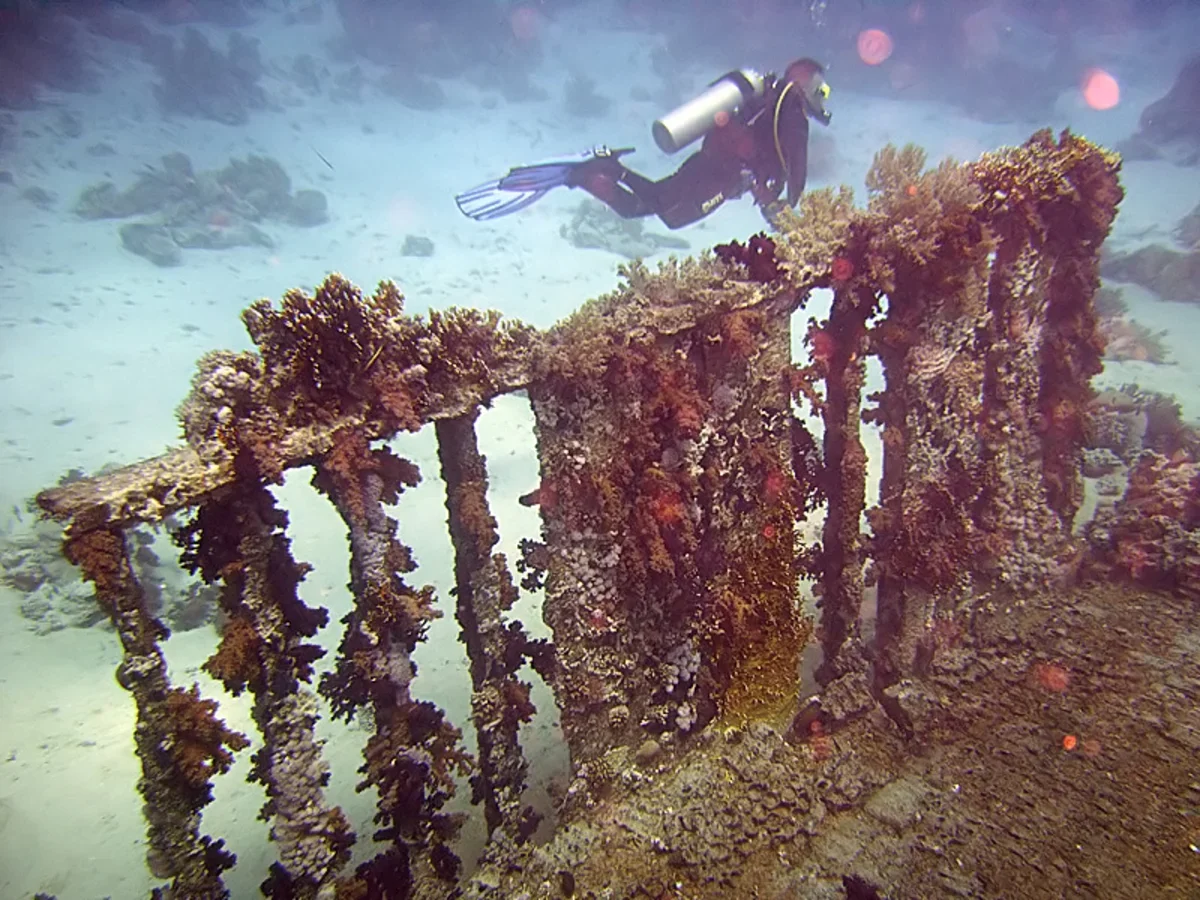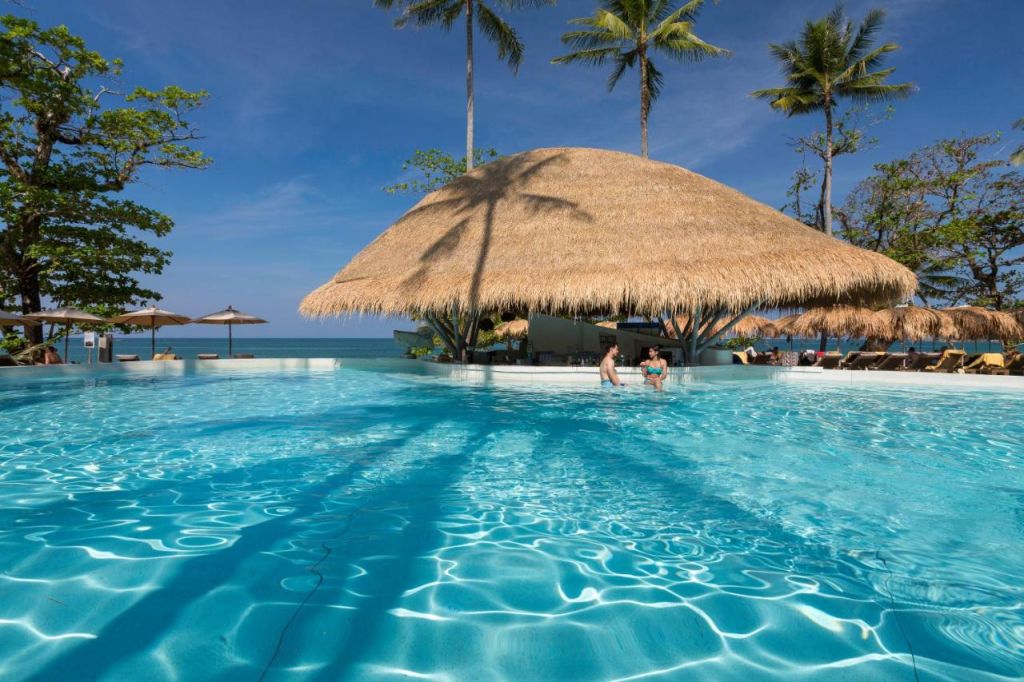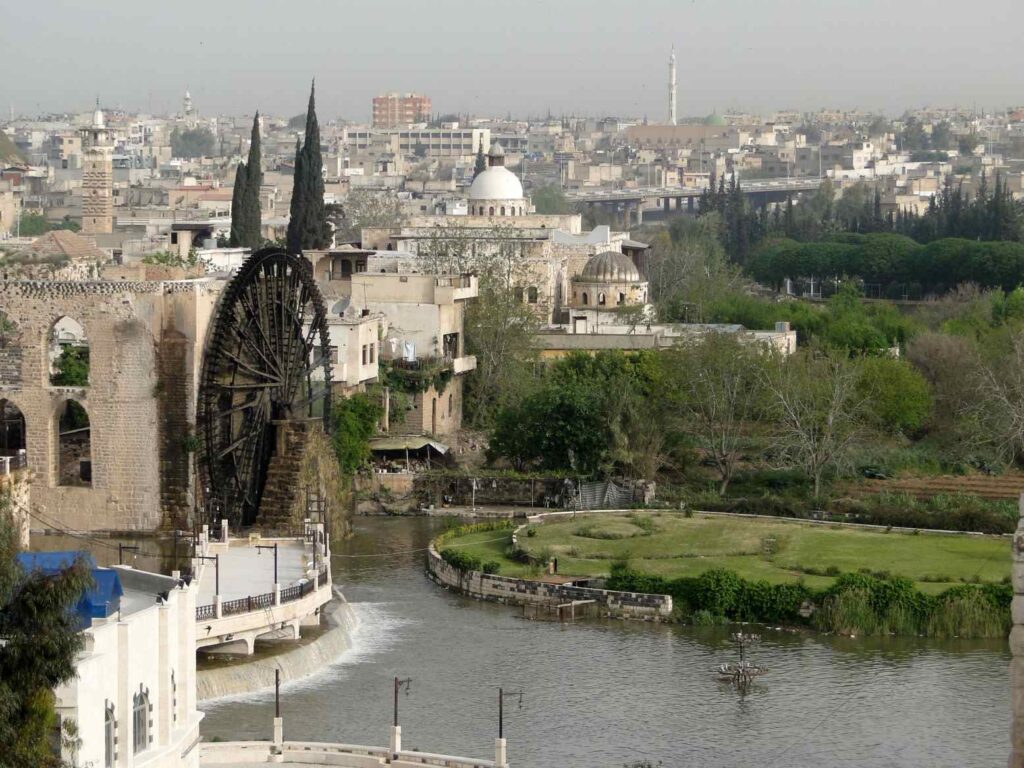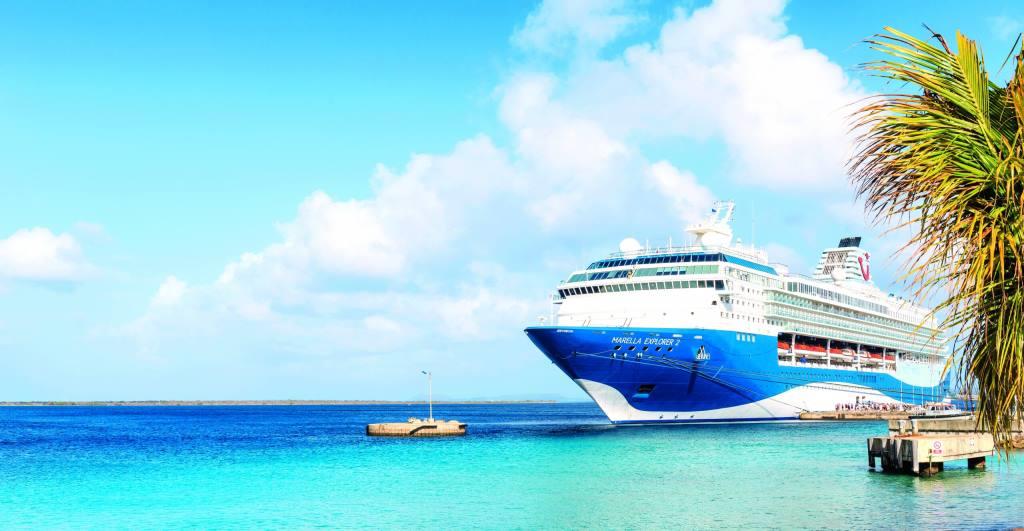Egypt’s Red Sea resorts offer more than just a glimpse of the diverse underwater world; they also provide access to sunken ships, each with its unique history and past.
Here are six of the most well-preserved sunken ships resting on the bed of the Red Sea:
SS Thistlegorm
SS Thistlegorm is arguably the most famous sunken ship in the Red Sea. In 1941, after several commercial voyages to the USA, Argentina, and the West Indies, SS Thistlegorm was tasked with replenishing supplies for the 8th British Army. Departing from Glasgow to Alexandria, the ship dropped anchor in Shaab Ali while awaiting clearance to pass through the Suez Canal. During this stay, the cargo ship became the target of an air raid, causing the ammunition to explode and the ship to sink in less than ten minutes.
Nearly 15 years later, French oceanographer Jacques Cousteau discovered the untouched sunken ship. Everything remained in place, including cargo (BSA and Norton motorcycles, Bedford, Morris, and Ford trucks, UC-MkII tanks, and more). Even after spending decades at the sea bottom, SS Thistlegorm continues to attract interest due to its vast size at a depth of 31 meters.
Dunraven
The British ship Dunraven, which carried spices, gold, and timber from India, sank in April 1876 near the South Cardinal lighthouse in the southern part of Shaab Mahmud, a reef system in the Gulf of Gubal. The ship ran aground on the reef and, after 14 hours of unsuccessful attempts to free itself, slid off the reef and sank.
Upside down and split in two, Dunraven has rested by the reef at a depth of 20 to 30 meters ever since, resembling a large underwater cave. The wreckage was only discovered in 1977 by German oil workers, and initially, the ship was unidentified. It was only after finding an artifact with the ship’s name (a shard of porcelain tableware) that the history of Dunraven was pieced together.
Over nearly 150 years underwater, the ship’s hull has been completely covered in coral and has become a home to glassy sweepers, squirrelfish, and butterflyfish, among others.
Giannis D
In April 1983, Giannis D, loaded with timber, embarked on its final voyage. While navigating the Gubal Strait, a narrow passage before entering the Red Sea, the ship veered off course and collided with the northwest edge of Abu Nuhas Reef. The crew abandoned the ship and was rescued by an Egyptian boat nearby.
Today, Giannis D lies on the seabed near the reef, divided into three parts. Divers can explore the stern section and, after swimming past the bridge, gain access to the engine room and living quarters.
Yolanda
The Cypriot cargo ship Yolanda set sail for Aqaba, Jordan, carrying cargo that included containers of plumbing fixtures, bathtubs, pipes, crates of whisky, and even a BMW 320 belonging to the ship’s captain. On the night of April 1, 1980, Yolanda ran aground on the Ras Mohammed reef. The ship sank to a depth of 24 meters, with its bow resting in shallow waters, only 3 meters deep.
Yolanda became a popular dive site for the first five years, but in 1985, a powerful storm shifted the ship from the reef, causing it to disappear for two decades. In 2005, two divers rediscovered Yolanda, which had sunk to a depth of 145 meters.
Today, divers can explore the remaining sections of the sunken ship, which has become an underwater landscape teeming with marine life, including scorpionfish, bluespotted stingrays, and crocodilefish.
Chrisoula K
The Greek cargo ship Chrisoula K was loaded with large patio-style floor tiles from Italy and was bound for Jeddah in August 1981. However, on August 31, 1981, the ship entered the Red Sea and ran aground on the Abu Nuhas Reef. Chrisoula K lies with its stern and propeller at a depth of 26 meters, while its bow rests in shallow waters, just 3 meters deep.
The ship remains almost vertical, propped up by the reef. Divers find interest in exploring the cargo still on the ship’s deck, where some tiles still bear the label “Made in Italy.”
Ulysses
Ulysses, a British cargo ship, sank after colliding with a reef on the eastern side of Small Gubal Island in 1887. The ship was carrying cables, and remnants of its cargo, including cables, can still be seen on its deck, earning it the nickname “Cable Layer of Gubal.”
Divers can explore various parts of the ship, including the propeller, bridge, masts, booms, and other sections that have remarkably survived more than 100 years underwater.
These sunken ships off Egypt’s Red Sea coast offer not only a glimpse into maritime history but also vibrant underwater ecosystems for divers to explore.










